JOUSTRA DIACLONE F15 (STARSCREAM)
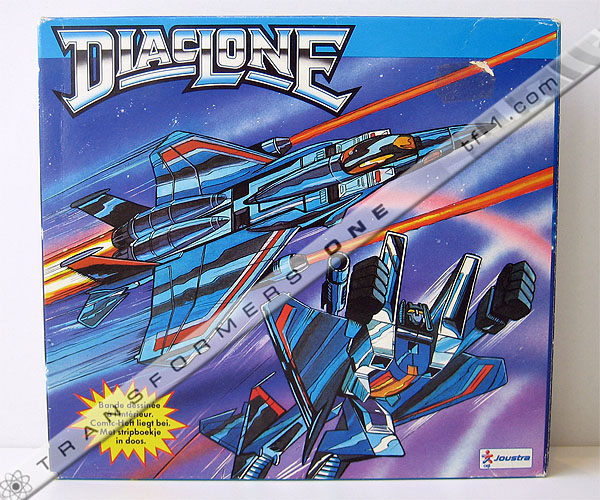
This is the beginning. The beginning of Transformers, the beginning of my Ceji Joustra Diaclone awakening. Factual writing and delivery of history and images are the domain of nearly every writer who cares to put words on a page, but when it's coupled with sentiment and genuine emotion for a particular piece, I like to think it makes a difference to the writer, and hopefully the reader. The Transformers Starscream was the first G1 Transformer I owned as a child, and the Ceji Joustra Diaclone-badged "F 15" was the first release I saw from this obscure category of pre-Transformers. An eBay auction in the early '00s first brought this incredible series of releases to my attention, releases that boasted sensational exclusive artwork and comics featuring well-known toys.
Released in 1984 across European countries such as France, Belgium, The Netherlands, Germany, Austria and quite possibly Scandinavia and Ireland, the Joustra F15 featured breathtaking artwork depicting the Japanese Takara Real & Robo Diaclone Acrobat F15 (pre-Thundercracker), quite obviously a blue jet. Looking more closely at the back and sides of the box, we can see that the actual stock toy photography shows a grey jet whose moulding suggests the use of the Japanese Takara Real & Robo Diaclone F-15 High-Speed Fighter (pre-Starscream).
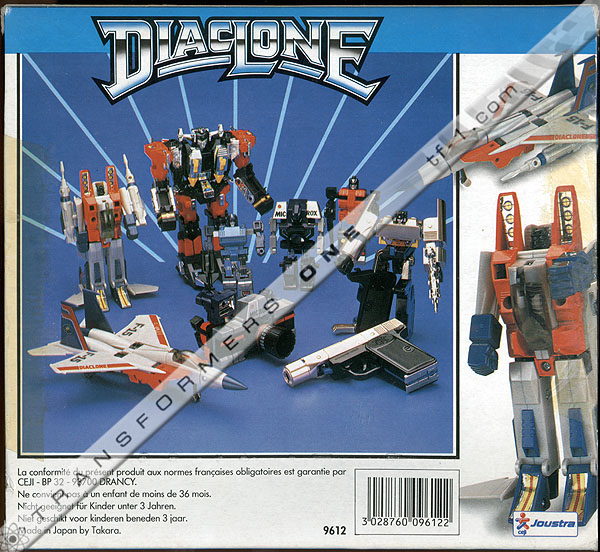
Being one of the first Joustra releases and a relatively common find thanks to case or store finds, its packaging features a range of Microchange and Diaclone items that hint at what else was available during the first wave of Joustra "Diaclones". You can see the "Multiforce 14", "Caméra Robot" and "Robocolt". F15's assortment number is shown to be 9612, and it clearly says that the item has been made by Takara in Japan. However, having already confused the issue with artwork for a blue jet and stock photography for a grey jet, the packaging provides further interesting pictures of note:


The jet shown everywhere on the box except on the front has Japanese Diaclone moulding features like super-sharp, un-chopped wingpoints and hard plastic nosecone. In addition to that, the factory stickers on the wings have "Diaclone" written on the red strips and the Diaclone pilot is also visible. It should also be noted that physically, the packaging for this Joustra F15 has the same dimensions as the Japanese Diaclone F15s.
As well as having some of the most impressive artwork ever seen on a Transformers-related toy, Diaclone or otherwise, the rest of the F15's box has a lovely astronomical theme with plenty of stars and swirling galaxies scattered around the place. Here are some close-ups of Paul and Gaetan Brizzi's tremendous artwork for the F15, and other significant points of interest:
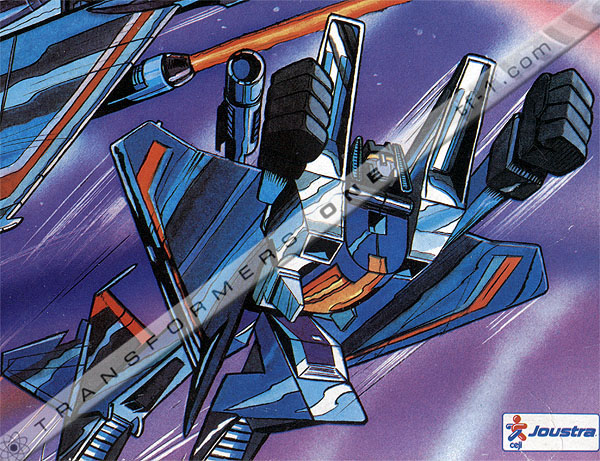
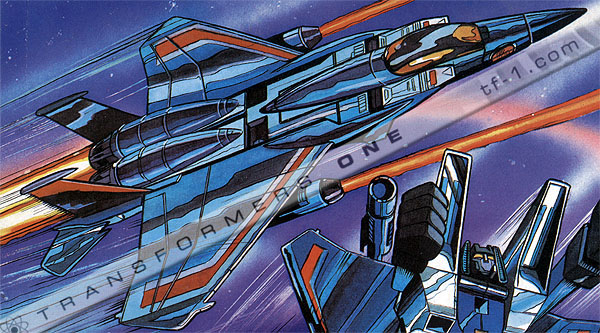
The prominently featured "Diaclone" logo is a highly recogniseable aspect of Joustra packaging, and the Ceji Joustra logo in the bottom right-hand corner has become synonymous amongst collectors with rarity, obscurity, exclusivity and something extra special. The yellow bubble explains that a comic strip is enclosed within the packaging, and while it is actually true and most of these Joustra releases do come with a quite amazing little comic strip, the truth is that later Joustra releases still had this yellow advert for the comics on their boxes but never featured a comic.
The excellent portrayal of the Japanese Diaclone Acrobat F15 is vividly coloured, hugely eye-catching and generously detailed. Even these images show super-sharp wingpoints, suggesting that the Brizzi brothers were given actual Japanese Diaclone toys to base their artwork on (in this case a blue jet instead of the grey one actually released). The circular red decal on the jet artwork's nosecone is straight off the Acrobat F15's stickersheet and not featured on the grey High-Speed Fighter's stickersheet. The factory labels and orange canopy of the original Japanese Acrobat F15 have also made their way into the artwork.
Let's just take a quick step back to the original Takara Japanese Diaclone releases of these F15s...
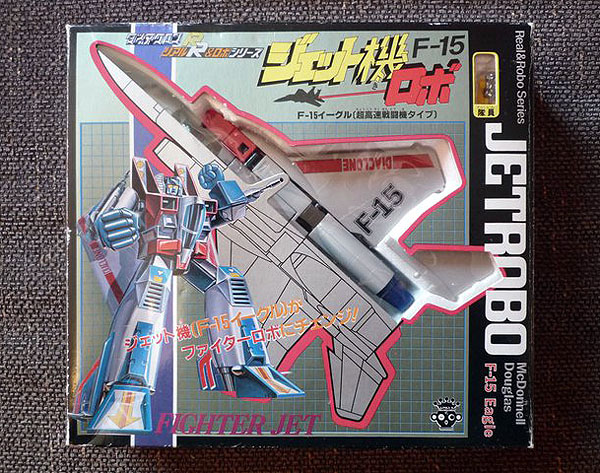
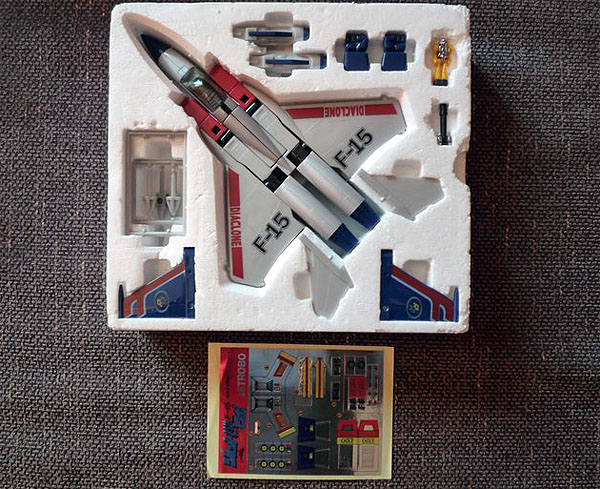
The above two pictures of the original Diaclone F15 show very clearly that the toy used on Joustra box photography came straight out of this package. You will also recognise the artwork for this Diaclone later went on to become the G1 box art for the hugely iconic and talismanic Decepticon, Starscream.
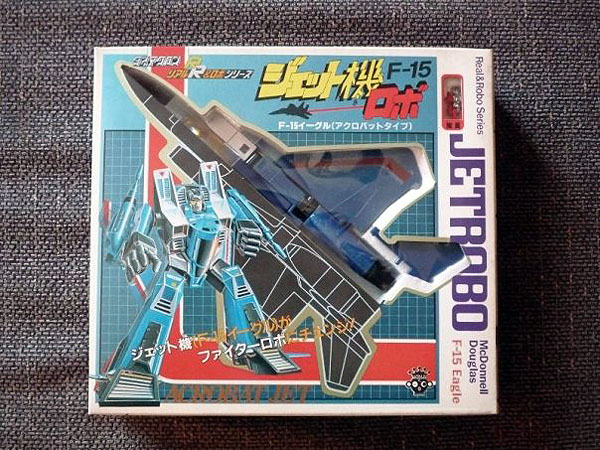
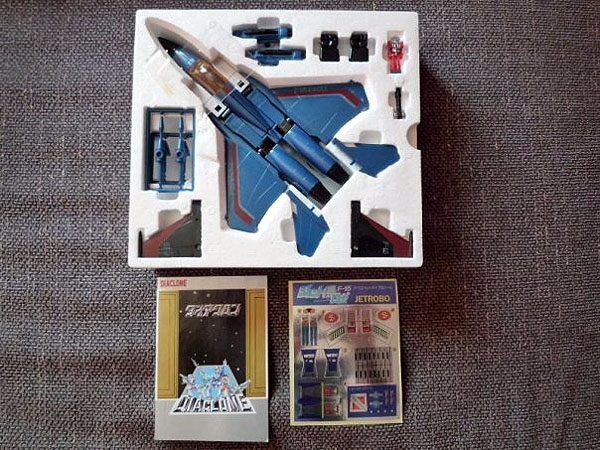
For the sake of completeness, you can also see the original Diaclone Acrobat F15 packaging and contents above. Whereas the grey High-Speed Fighter Type F15 adorned most of the Joustra box, it was this blue Acrobat that ended up in the hands of the artists and subsequently on the front of the Joustra F15 package. Notice again the pointy wings. The artwork for the original Japanese item later went on to be used for G1 Decepticon Thundercracker. Looking at the following pictures, the Italian GiG F15 Aquila has similar moulding to the Joustra (pre-rub era Transformers) with the Diaclone factory stickers. They do sometimes show up with classic bopper missiles though, and strangely for GiG Diaclones the driver as well:
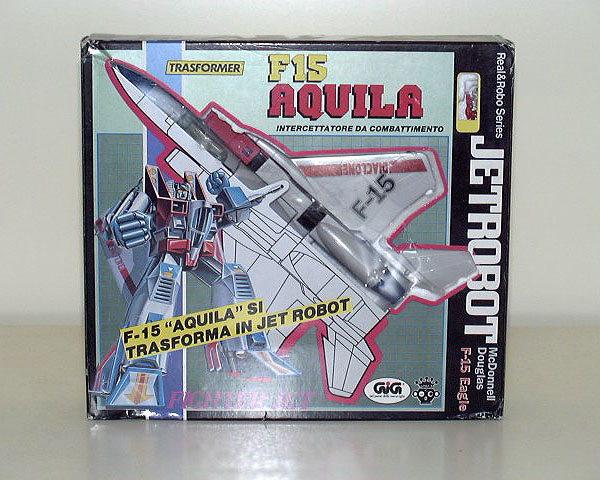
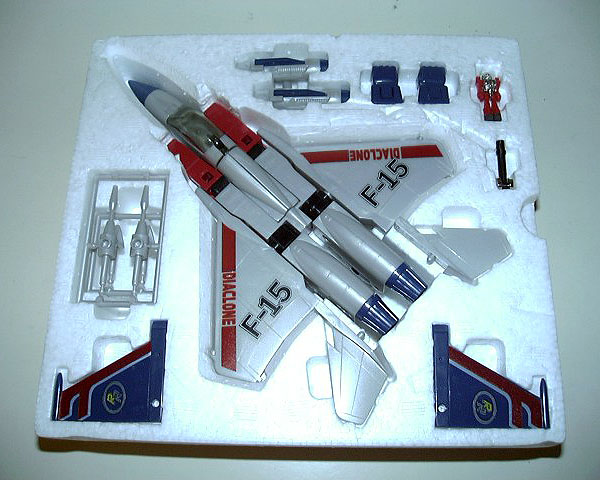
Leapfrogging the Joustra F15 for a further moment, considering the countries that Joustra Diaclones were available in, the subsequent Milton Bradley-badged Transformers also available in those countries pre-Hasbro takeover did nothing to put a halt to the F15-mould mixups and toy/packaging discrepancy. A number of Milton Bradley Transformers "Starscream" toys were released with a Thundercracker inside. This has been seen on a number of occasions and must in some way be related to the Joustra confusion over which coloured jet should end up on the box and inside it.
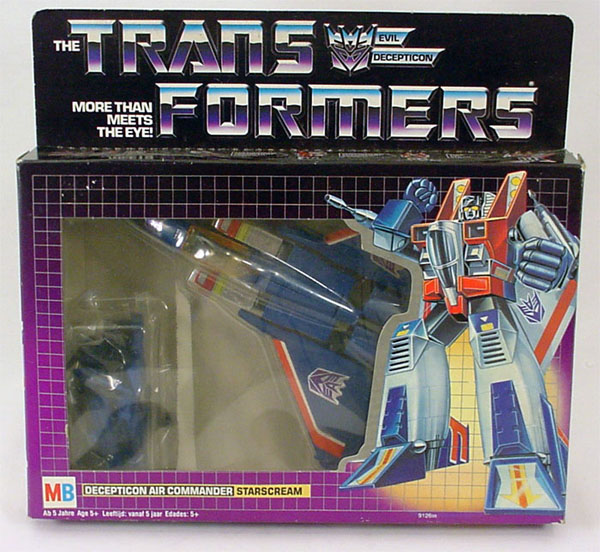
As if that wasn't confusing enough, in Italy, GiG released the G1 Transformers Decepticon Jets Starscream ("Astrum"), Skywarp ("Corvo") and Thundercracker ("Vampiro") in the same Starsceam-adorned box. However this is not related to the Joustra/MB situation as GiG were clearly doing this for cost-saving purposes as even the paperwork is shared for all 3 jets in Italy. You can see an example of the multi-character G1 jet GiG package here:
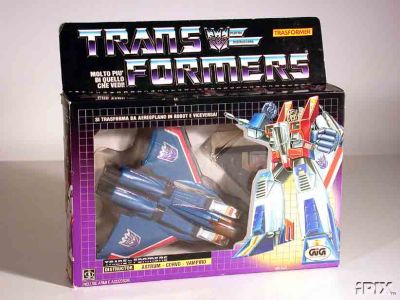
At this point I am fully aware that I have not yet made any mention of the colour of the jet inside the Joustra F15 package. Is it the same as the stock photography on the packaging and in Joustra catalogs or is it blue like the stirring Brizzi artwork? I'm sure you have already guessed...
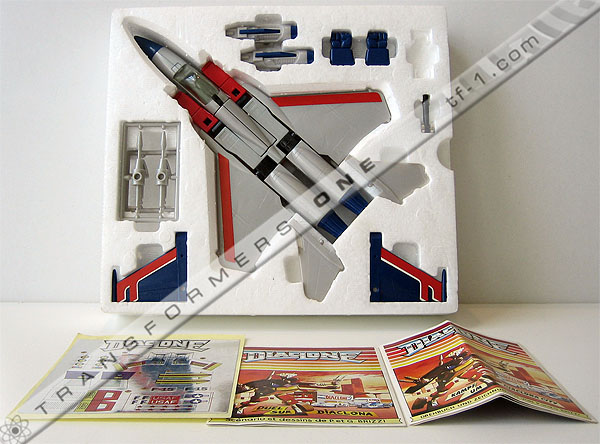
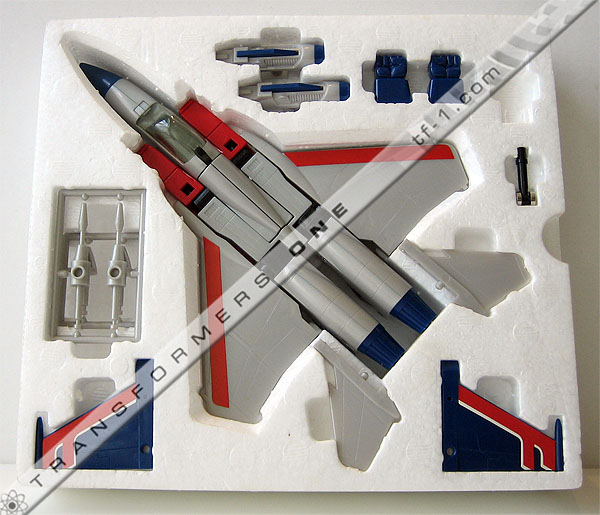
The Joustra F15 is indeed a grey High-Speed Fighter Type-derived jet, with some significant differences. For a start the toy is much closer to that of a 1984 Pre-rub Transformer mould-wise than a Diaclone. There are no sharp wingpoints, no Diaclone pilot, no sign of "F-15" or "Diaclone" factory stickers on the main wings. This may be a grey jet, but it's definitely not the Diaclone High Speed Fighter featured on the box, or the blue Acrobat F15 in the artwork. The styrofoam, however, is the same layout as that of the Japanese Diaclones.
The first picture above shows not only how the toy is attractively displayed in its styrofoam, but also the Joustra exclusive paperwork that accompanies many of these great toys. The real gems; The Joustra exclusive comics. The F15 has proved quite special in that it is one of the only releases I have seen that not only came with a single comic (in this case French), but also a second German comic in the same package. I have seen a number of F15s which came with two comics, this particular specimen hails from Austria and is unsold store stock.
Here are scans of the Joustra F15 stickersheet, front and back:
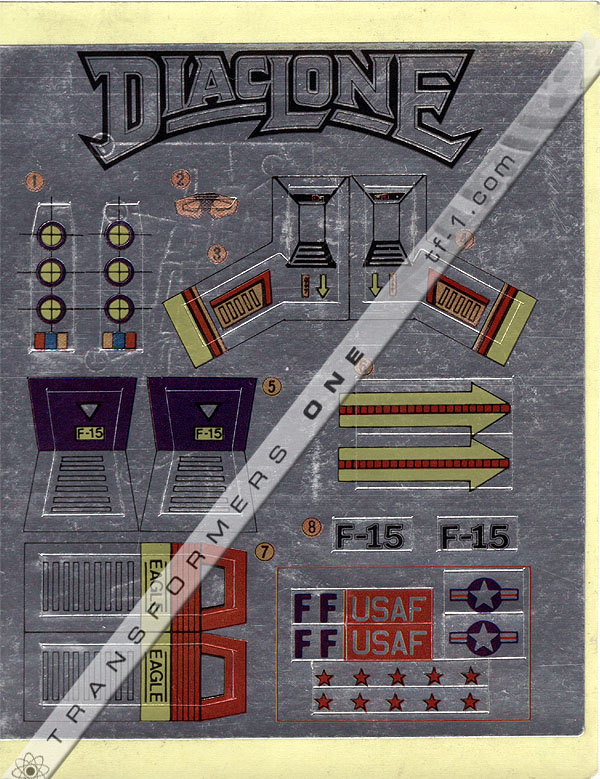
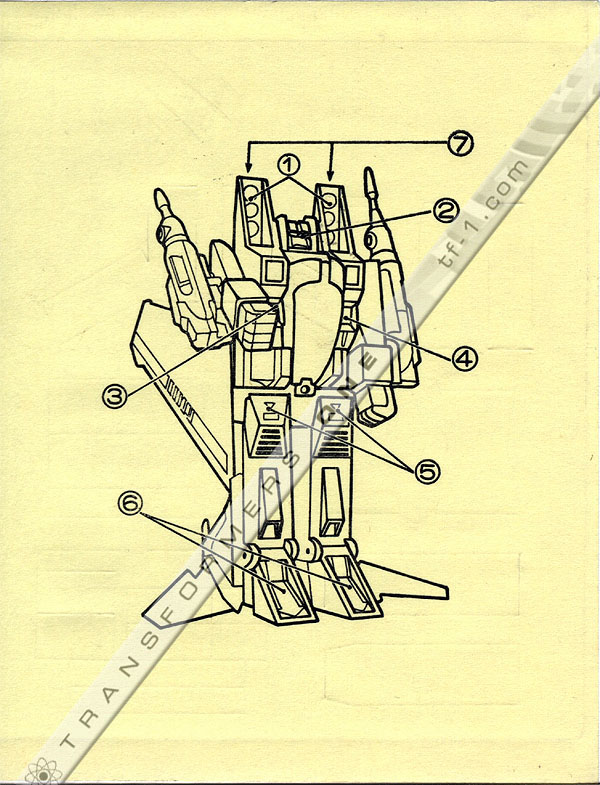
As with many Joustra releases, the stickersheet is almost identical to the corresponding Japanese Diaclone stickersheet, in this case the High-Speed Fighter F15, the exceptions being the stickermap printed on the reverse of the stickersheet (due to Joustra toys not coming with instructions) and the "Diaclone" logo. Notice all of the USAF-themed stickers, "F-15" and "Eagle" markings relative to the comparitively plain Transformers stickers for this mould.
Enough distractions though, it's time to reveal the contents of the 6th instalment of the Joustra comic series, a story strip shared by the F15 and Camera Robot (Joustra Microx Reflector):
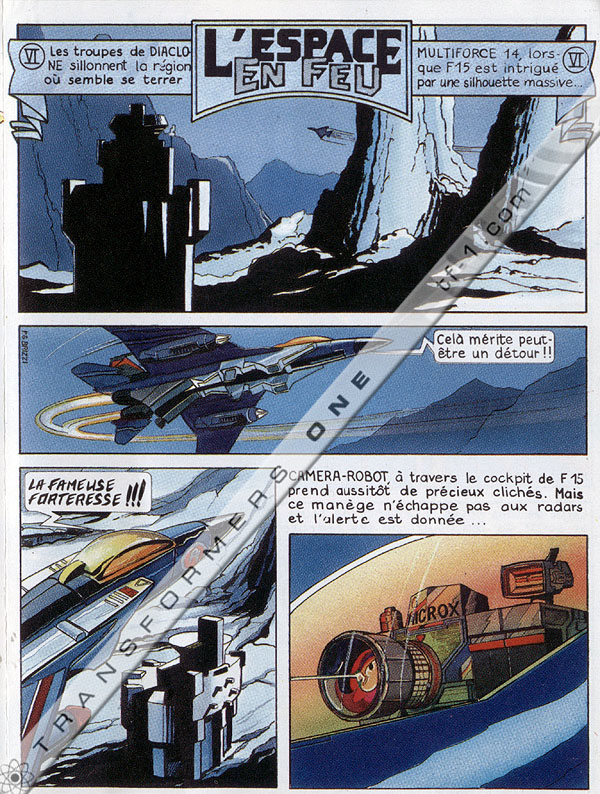
"CHAPTER VI FIRE IN SPACE - The Diaclone troops roam the area around Multiforce 14's hidden lair, when F15 becomes intrigued by a massive silhouette.."
F15: "Perhaps it deserves a detour!!", "THE FAMOUS FORTRESS!!!"
"Camera Robot, through F15's cockpit, immediately took precious pictures. But this flight is not immune to radar and a warning is sounded"
So, Thundercracker and Reflector appear to have spied upon the enemy fortress, extremely reminiscent of "OK Reflector, let's see what we can see" from MTMTE!
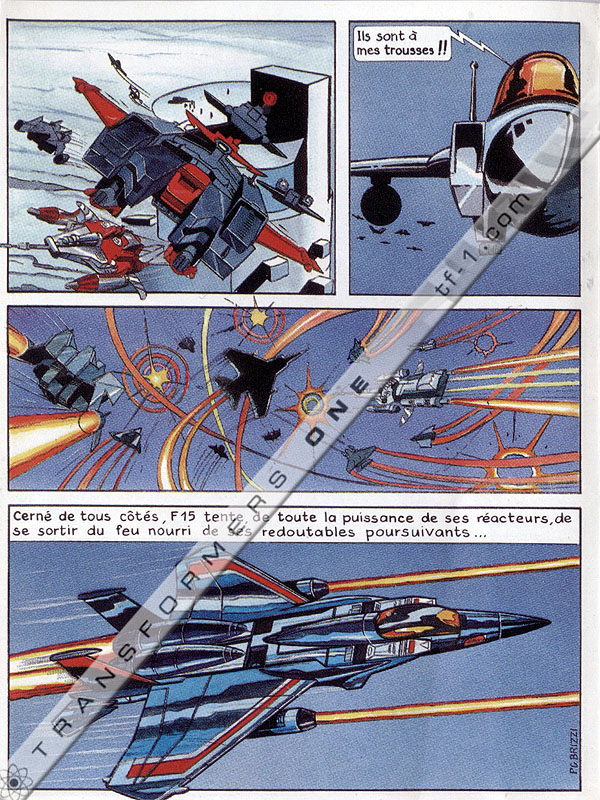
F15: "They're on my heels!!"
"Against all odds, F15 uses all the power of its engines to escape the heavy fire of his formidable pursuers..."
Again some interesting parrallels to be drawn here with Transformers Thundercracker's techspec where he is said to be as close to an Autobot sympathiser as possible whilst in Decepticon ranks, and it also alludes to his powerful engines.
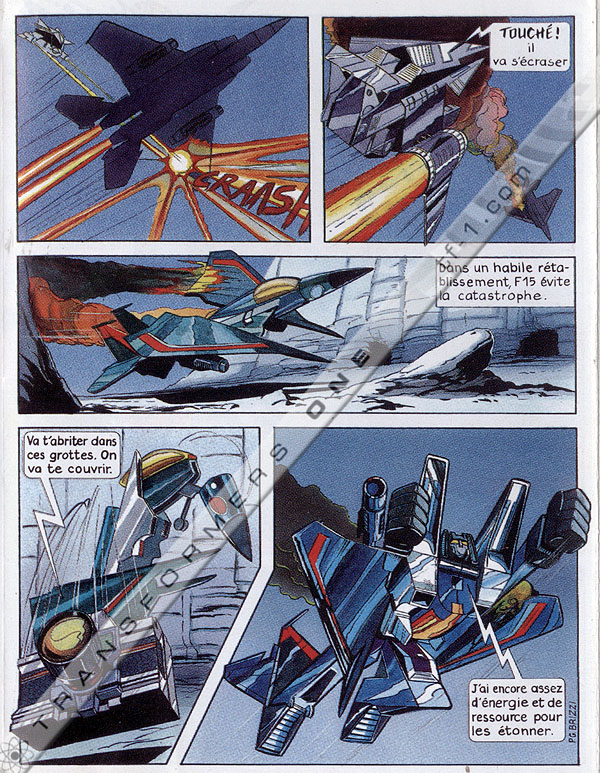
Attacker: "TOUCHE! It will crash"
"In a skillful rescue, F15 avoided catastrophe"
Camera Robot: "We'll take cover in these caves. We'll cover you"
F15: "I still have enough energy and resource to astonish"
It's really very strange to see such well-recognised "Decepticons" show great camaraderie and courage. One of the most appealing features of these comics is the different dimensions of character they allow established toys.
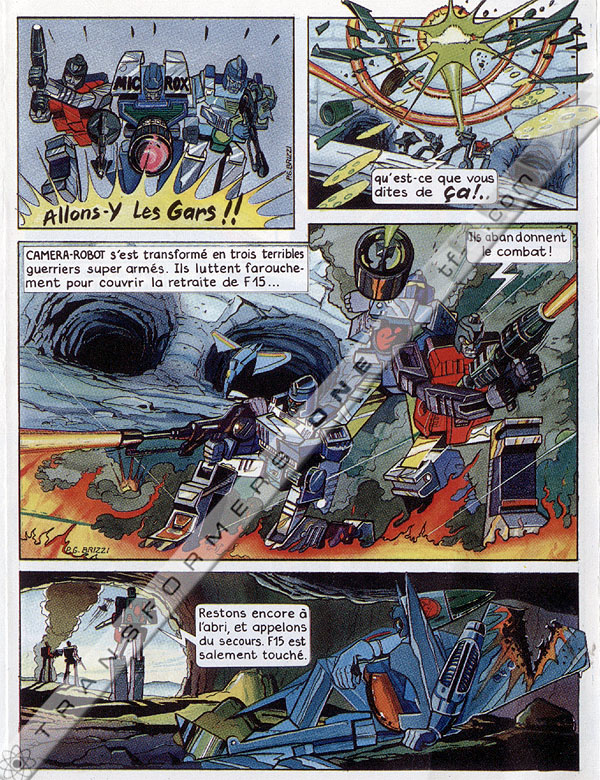
Camera Robot: "Let's go guys!!", "What do you say about that!.."
"Camera Robot transformed into three superbly armed fiersome warriors. They fight fiercely to cover the retreat of F15..."
Camera Robot: "They gave up the fight!"
Camera Robot: "Let's stay in the shelter and call for help. F15 is badly hit."
On this last page you can see the boxart for the Joustra Camera Robot (Microx Reflector) which leads me to believe it shares the same comic chapter as the F15 whose boxart is featured on the earlier pages. I have not included the cover of the comic or the catalog section as you can see similar scans in the Ligier article.
So much is made of the Joustra packaging and literature, and rightfully so. Where else do you get such magnificent exclusive material with such unique character and style? The comics are somewhere between the pilot-driven Diaclone mecha and fully sentient Autobot-Decepticon story intertwined with humanity.
There is of course a very special toy beneath these exquisite layers of artwork and storytelling...
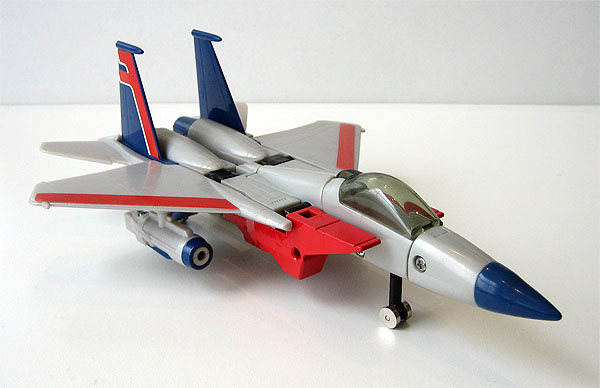
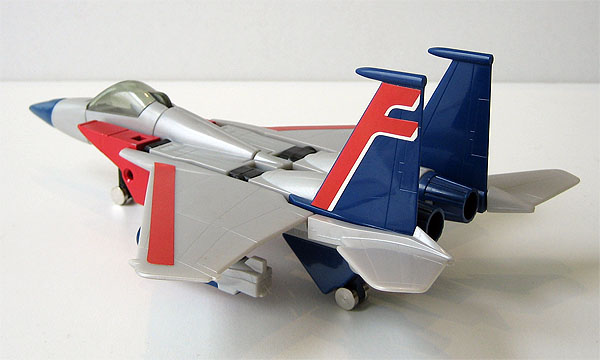
The venerable McDonnell Douglas F-15 Eagle mould has seen many incarnations, but it only gets more special the further you go back in Transformers history. The Joustra F15, sharing many mould characteristics with a 1984 pre-rub Starcream, is no exception. Very few figures from this era can look so good without any stickers applied. The successful contrast between the red, grey and blue on this F15 remain unsurpassed by any recolour in my opinion. Early pre-rub Starcreams and Diaclone F15s suffer from loose nosecone joints, but this Joustra is super-tight and only one of the small rudders had any difficulty attaching to the fins.
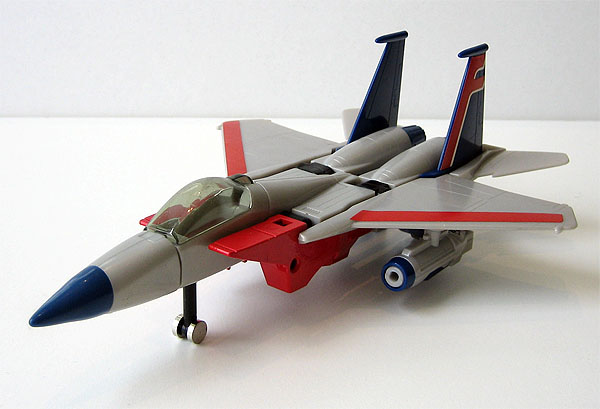
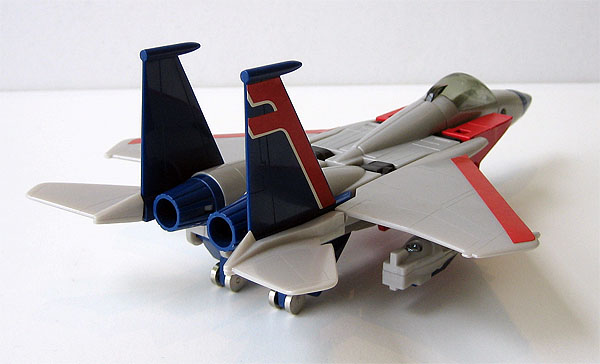
The displayability of this toy is beyond question. It looks regal from every angle and attaching the missiles is not at all necessary. The factory stickers provide just enough decoration for the stickersheet embellishments to remain non-essential as well. Great lines and proportions all contribute to what must be one of the all-time well-loved toy moulds of the 80s. Even without the character of Starscream and the Transformers gravitas behind it, I find it hard to believe that any child who had a Joustra F15 purchased for them in 1984 in Europe would not have instantly fallen in love.
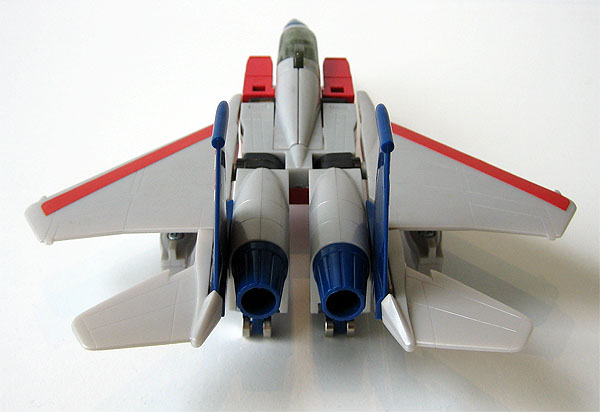
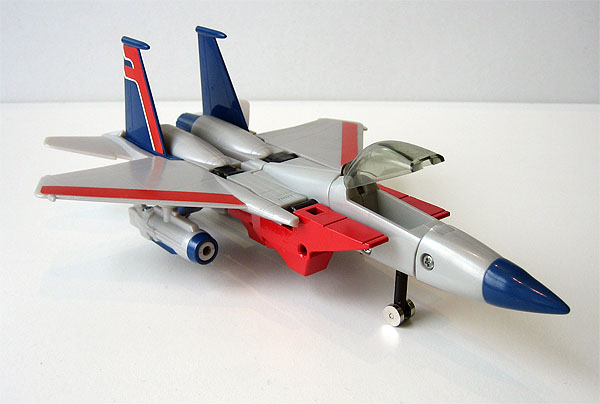
The rubber nosecone on this Joustra F15 is about the only example of quality control I can identify on this specimen, it doesn't quite point straight. I could tell when I was photographing it that it had never previously been assembled or transformed, and the feel of the figure was markedly different to that of the brand new reissues of Starscream. It felt sturdy, strong and the joints and parts gave way in a certain fashion that oozed quality. Lovers of this mould should consider a Joustra F15 as a very serious alternative to a Transformers Starscream both in terms of quality and displayability.
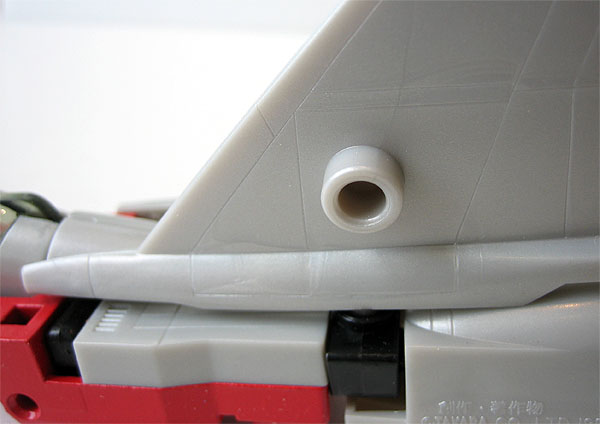
The main wings and rudders are solid underneath, no cavities or hollow sections as with rubsign-mould Transformers. Everything fits together perfectly here and the wings stay attached very well, no inherent looseness at all.
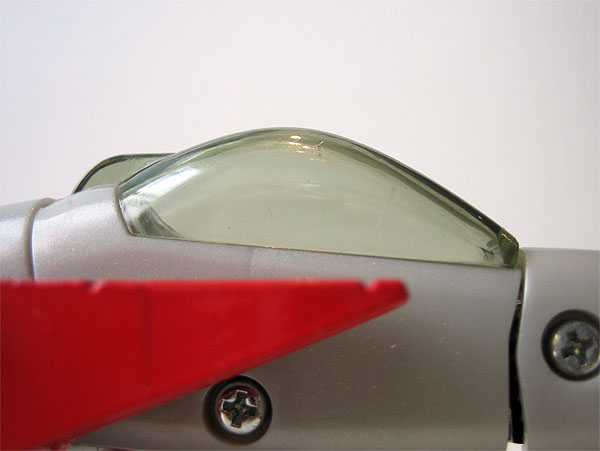
The cockpit is clear and smooth, just what you would expect from a 1984 pre-rub era Transformer. One of the distinguishing features of the Kingdam F15 Robojet KOs is the orange canopy and the darker grey plastic, as well as they grey tailfiins as opposed to the dark blue official releases. There should be little chance of mistaken identity for F15s versus KOs. You would have difficulty distinguishing between a pre-rub TF and a Joustra though, without any of the stickersheet applied.
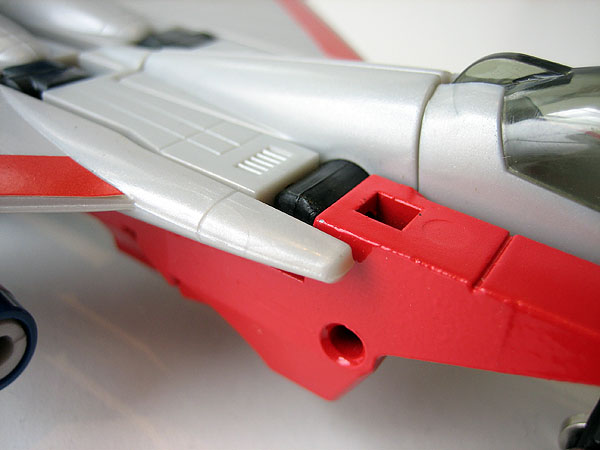
Here you can see a bit more clearly what I mean by "wingpoints". This Joustra F15 has rounded tips to the main wings whereas the Diaclone from Japan would have had less safety-inspired sharp points. This feature also distinguishes the Joustra F15 from the early pre-rub first release Transformers which may have had hand-sanded wingtips, although that feature has so far only been documented on Thundercrackers.
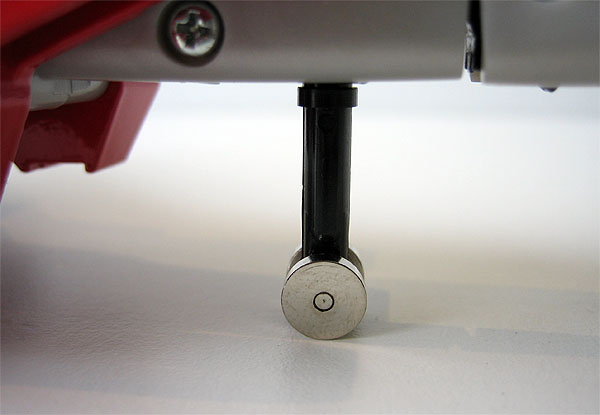
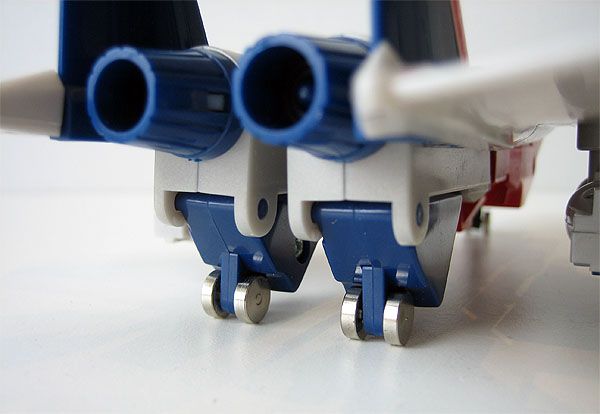
Here is a shot of the copyright on the Joustra F15:
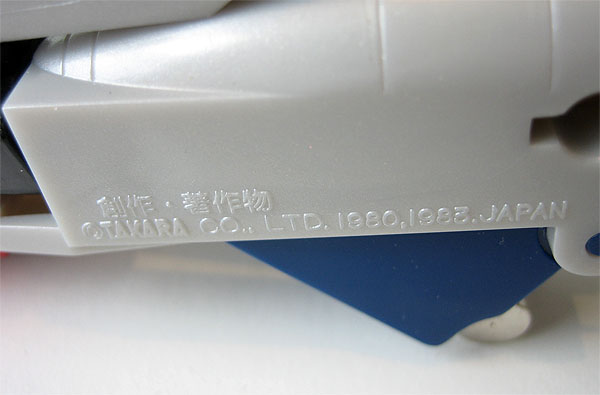
Again, very typical of a pre-rub era jet. The Japanese Diaclone F15s had no copyrights at all, and the earliest pre-rub TFs wouldn't have had a copyright either. This stamping is the first to appear on this mould, TAKARA with dates and Japanese lettering. The Italian GiG "F15 Aquila" pre-Transformer mould would share the same stamping as this figure. Rubsign-era Transformers would have Hasbro stampings added as well.
After a transformation procedure that would be second nature to almost all collectors, we see the Joustra F15 in robot mode:
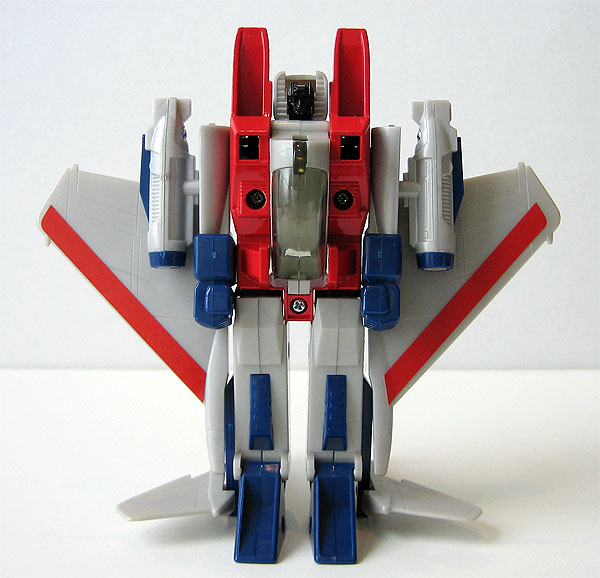
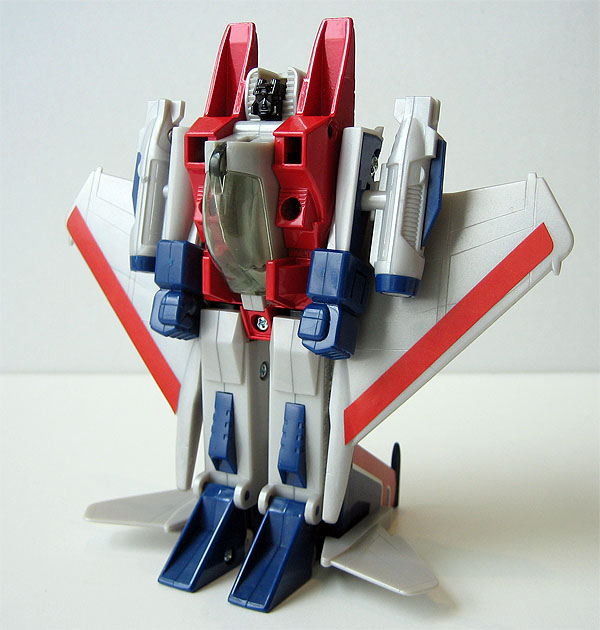
It doesn't matter that there is more articulation in a modern figure's hands than on Joustra F15 as a whole, or that the missiles are still on the sprue and the stickers remain unapplied. Striking colours, excellent posture and proportions and a feeling of a well-armed robot just do the trick here perfectly. There are various display possibilites with the main wings, some people tilt them backwards, some people fold them back all the way. I prefer having them pointing outwards to maintain as wide a profile as possible. I love the way those brilliant red stripes on the wings are visible in robot mode, complimenting the red diecast.
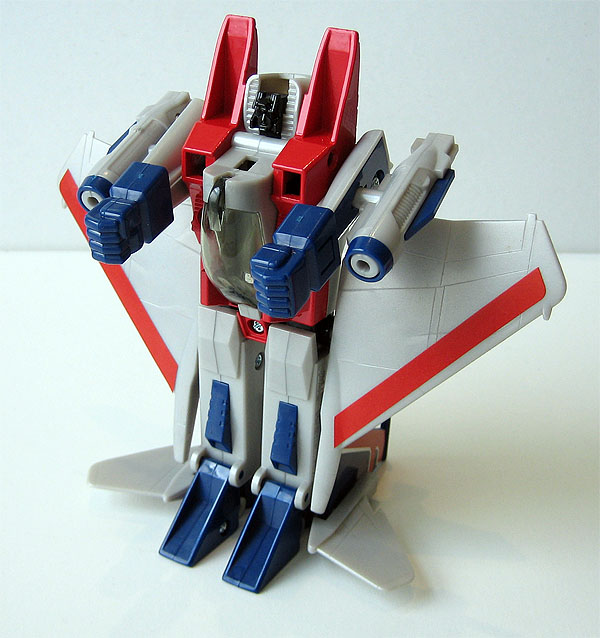
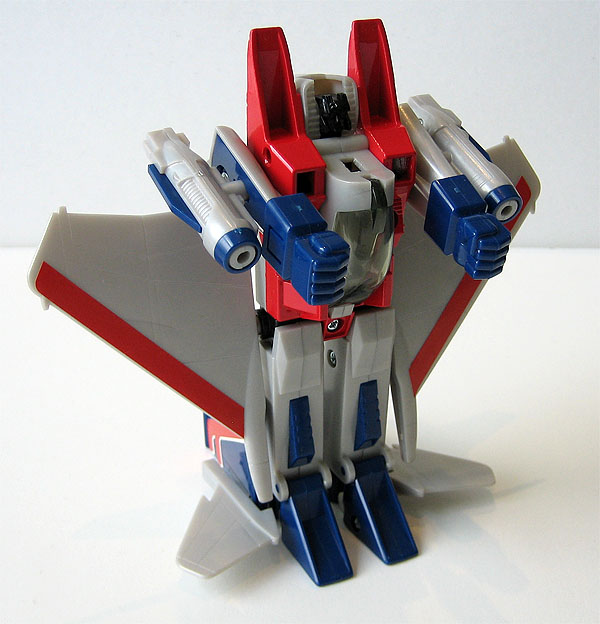
The launchers on F15 are obviously completely unused, so they were very tight when I tried them with loose Sunstorm missiles I had, but after a few tries they fired the missiles well, unlike neutered Transformers in the US and UK. One thing I do prefer about the Diaclone version of this toy is that the sharp wingpoints really add to the robot mode, but at least the rubber nosecone ensures that the Joustra F15s head does not roll backwards under the weight of the plastic nosecone of Japanese Diaclones.
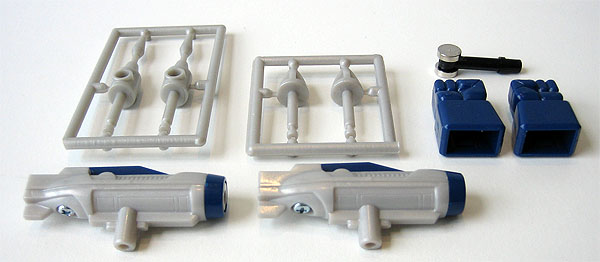
A close look at the accessories reveal that the inside of the blue fists are also solid, no "U" moulded into them as with rubsign-era Transformers. The missile launchers are, as mentioned above, potent and short-tabbed.
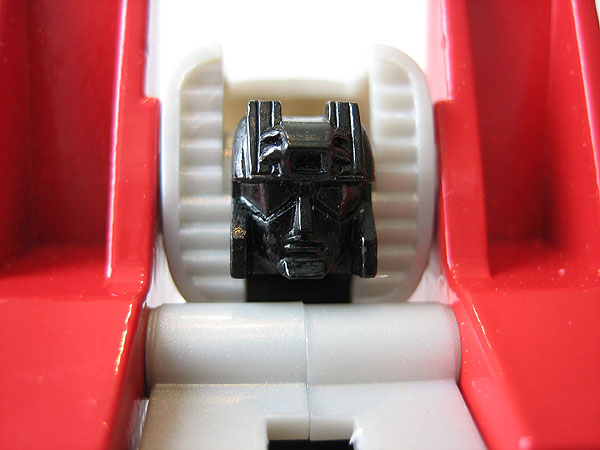
Unmistakeable, and hard to think what children and collectors would have made of this head sculpt and mould in general before the character Starscream was born. Lovely clear and defined moulding on the Joustra F15 robot head here, and no numbers or letters moulded into the shoulder cavities. As far as this release is concerned, this is the face of an intelligent and courageous hero of Diaclone.
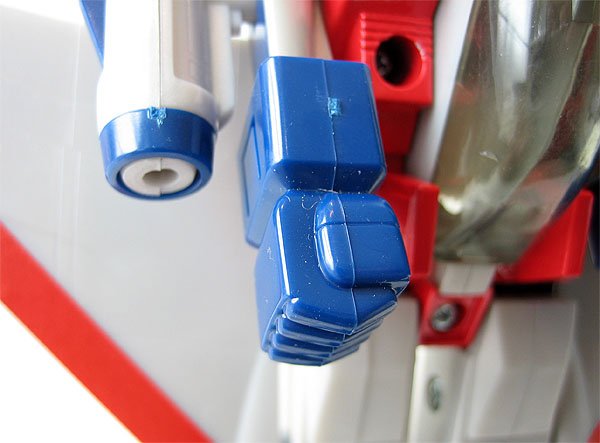
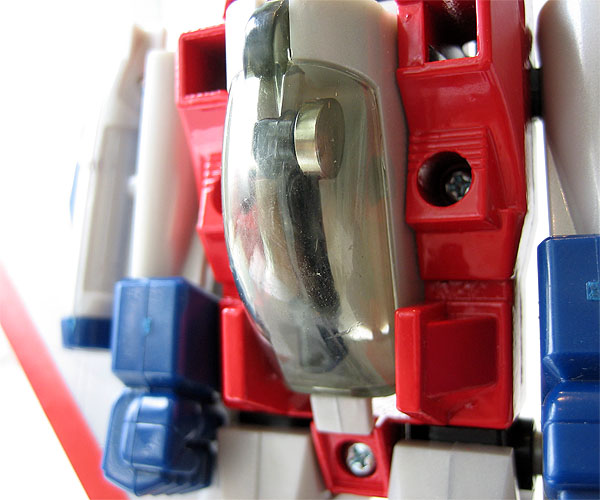
The canopy in robot mode acts as storage for the landing gear, but of course it was originally where the Diaclone pilot would have controlled the robot from. There is such an old-skool feeling to this toy, and yet it somehow remains completely timeless.
Going back to the original question of colour, why is the toy grey instead of the depicted blue? This could have something to do with the early pre-rub Thundercrackers with the sanded wing tips. The original Diaclone F15s were hugely flawed moulds as outlined earlier in this article (heavy nosecones). In addition, the first Thundercrackers shipped to Hasbro in 1984 had to have their sharp wingtips sanded down manually.
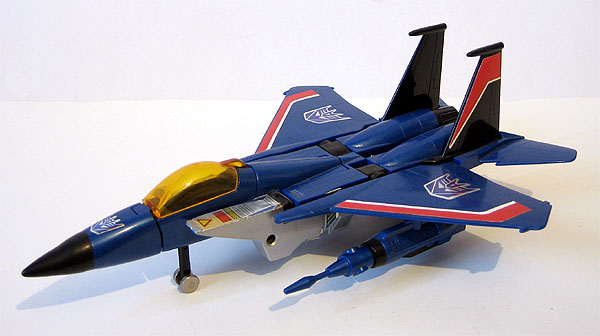
If these issues were highlighted at that time, it's possible that this was a cause for concern and Takara exchanged the shipment of Thundercrackers with sharp unsafe wingtips with Starscreams (from a similar era these have not been found with sanded wingtips). Japanese Diaclones are the only F15s (apart from Mexican and post-MB Euro jets) with plastic nosecones, this mould went through probably the biggest change from Japan to other countries in 1984, even GiG and Joustra. I wonder if this delay or massive change in moulding and overall design could have meant that there were not Thundercrackers available for this huge shipment, especially in the quantities that Ceji Joustra would have purchased from Takara. Maybe the Joustra F15 which shows up on the 2nd hand market as much as the Porsche was hugely popular, and they (Ceji) burned through grey F15s and when Takara finally got around to shipping Thundercrackers they went into MB boxes in some small quantity after the takeover and stock purchase by MB.
As Joustra F15 said in the comic. "Perhaps this deserves a detour!". Here is the figure in question alongside a first release E-Hobby exclusive Transformers Sunstorm:
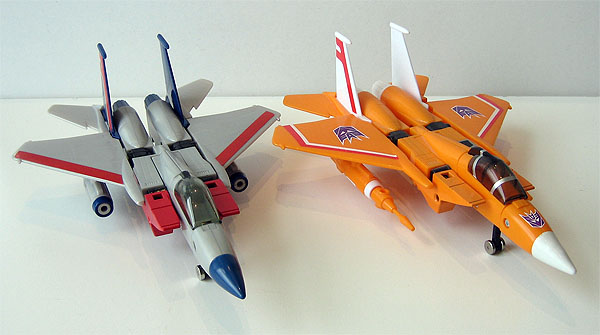
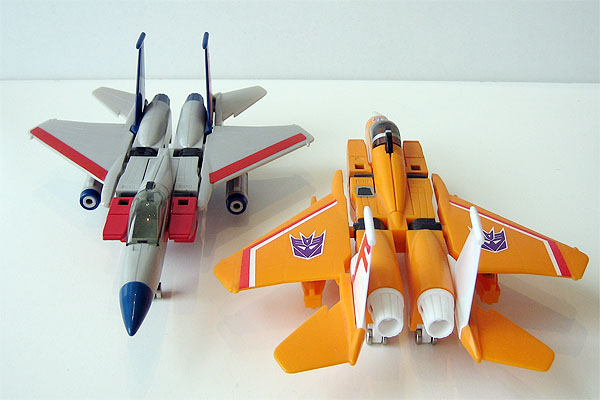
In order to demonstrate just how limited the articulation really is on the Joustra F15, here it is alongside the rather special MP-03 Takara Masterpiece Starscream from 2006:
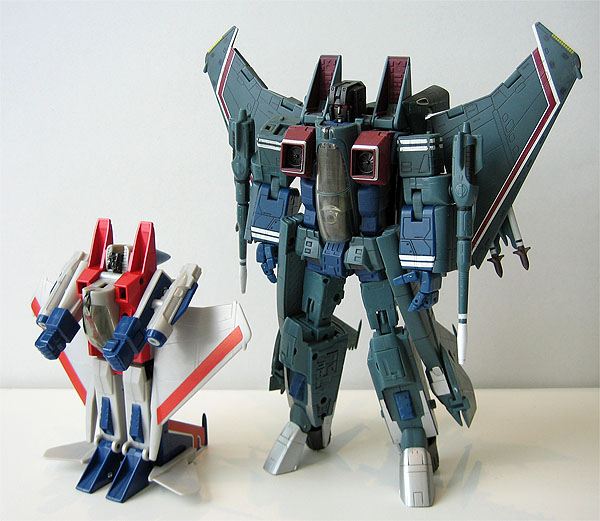
The inspiration for the masterpiece. Here now is a Transformers Starscream, all stickered up as the Decepticon Air Commander:
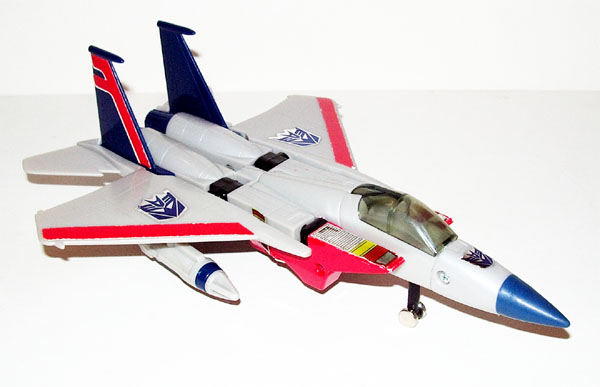
Paul Vromen's full-size uncropped artwork for this article:
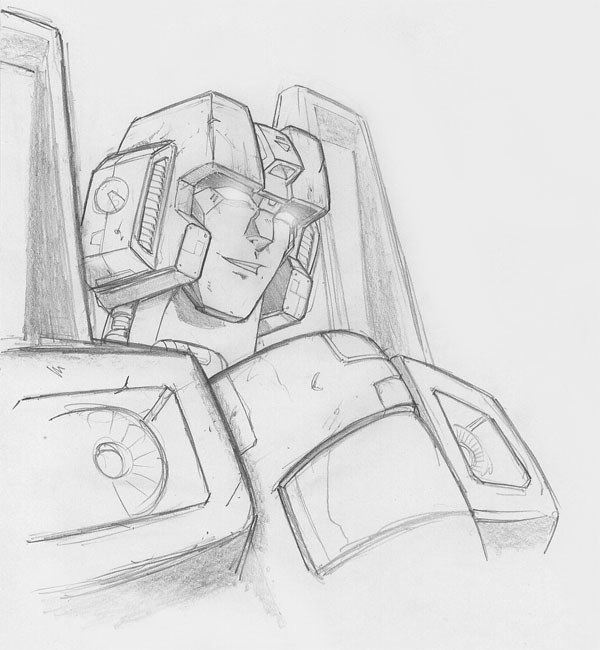
Finally, a picture of the Joustra F15 with the rest of my Joustra collection as of May 2011, to demonstrate that even amongst a load of beautifully-illustrated boxes, the F15 remains standout:
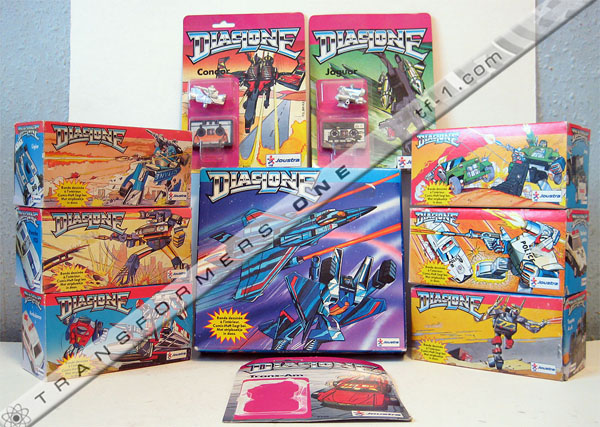
I said at the start of this article that this piece has huge personal relevance for me. Putting it through all the paces of photography, analysis, scanning and its first transformation have all added to my love for this mould and particular release. There is not a single other version of this mould that I would recommend above the Joustra F15, not even the original Japanese Diaclone with its unique wings and heritage. I actually believe that despite the relative lack of rarity of the Joustra release compared to the other Joustra items or F15s, it actually has more prestige and presence than any other Starscream or jet release.
When you add to all of the above this toy's significance as a major player in the Transformers mythos; the original cartoon, comics and the live action movies, it becomes completely irresistible. Seeing this specimen at the heart of my pre-Transformers collection makes me simply burst with pride, it's that stunning. The best artwork of all its incarnations, the best inner packaging for preservation and display, the most robust moulding and functionality of all vintage versions, the most interesting literature and paperwork to be included with any F15 release. This is the perfect place to begin a pre-Transformers collection, let alone a Joustra collection.
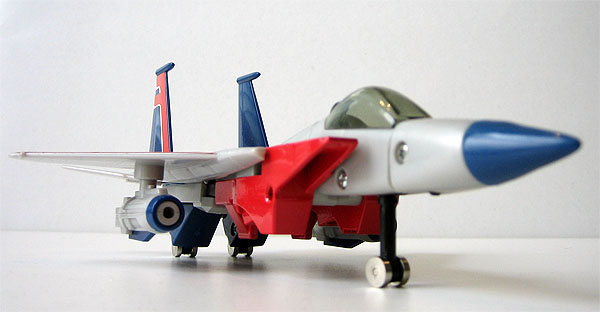
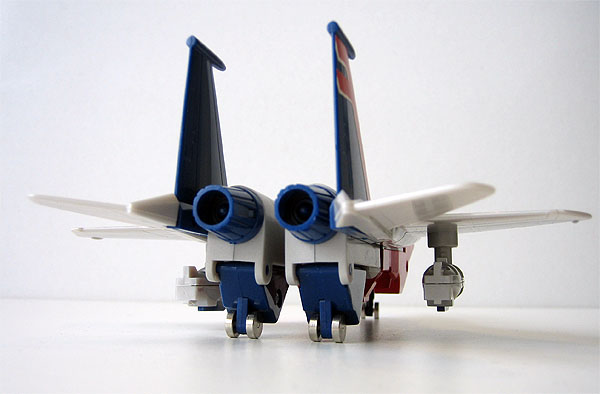
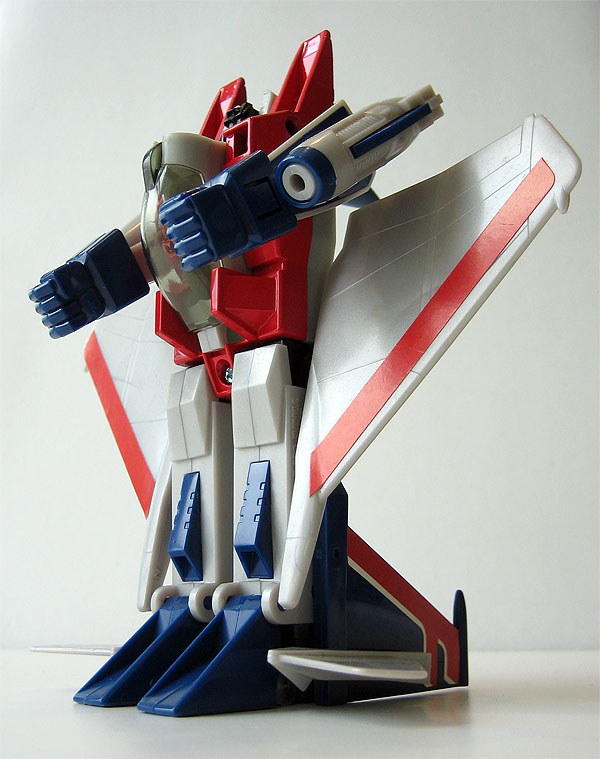
Many kind and heartfelt thanks to Alessandro Musconi for the Diaclone F15 images, to Jesse Chen for the GiG F15 pics and to Charles Liu for the MB Starscream image. Finally, I extend my endless gratitude to Paul Vromen for his continuing commitment and contribution to TF-1.
All the best
Maz









